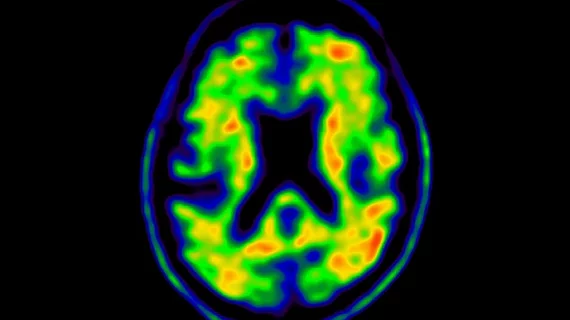A new Alzheimer's drug therapy appears effective. What might this mean for the future of amyloid PET?
On Sept. 27, news broke of a new Alzheimer’s treatment that was shown to significantly reduce functional and cognitive decline in individuals with early symptoms of the disease.
Out of 1,795 individuals who participated in the study, those who received the new drug, called lecanemab, showed a 27% reduction in clinical decline. Lecanemab is an intravenous drug that targets amyloid—a naturally occurring protein known to disrupt cell function that has played a starring role in Alzheimer’s research for some time.
There is a caveat. When effective, anti-amyloid drugs such as lecanemab can cause amyloid-related imaging abnormalities on imaging. In this latest trial, patients who were treated with lecanemab showed increased incidence of two different kinds of amyloid-related abnormalities (ARIA-E and/or ARIA-H) on PET imaging 18 months after initiating treatment in comparison to those who received a placebo.
On the other hand, ARIA symptoms—headache, confusion, dizziness, vision changes or nausea—occurred at a rate of only 2.8% (vs. 0.0% with the placebo). This speaks to the drug's safety on top of its efficacy.
So what does this mean for the future of amyloid PET imaging? Currently, coverage of the scan is under review by the U.S. Centers for Medicare and Medicaid Services. Previously, CMS determined that coverage for patients receiving treatment was dependent on their being enrolled in a CMS-approved clinical trial under coverage with evidence development (CED). Even then, the scans were limited in number. The decision was widely criticized by many prominent voices in the imaging community, which led to the eventual reconsideration of coverage, specifically as it pertains to scan limits.
Changing Therapeutic Landscape ‘May Lead to Changes in Payment for Amyloid PET’
While the official redetermination is still underway, the results of this latest research beg to question whether this new treatment will yet again change the landscape of coverage decisions, given the positive findings rendered in the trial.
“With the availability of new therapies for Alzheimer’s disease that target amyloid, the need for early and accurate diagnosis of Alzheimer’s disease is greater than ever,” Jonathan McConathy, MD, PhD, with the University of Alabama at Birmingham-Division of Molecular Imaging and Therapeutics, said in a statement to Health Imaging.
McConathy added that not only does amyloid PET imaging offer a noninvasive means of determining whether patients would benefit from anti-amyloid therapies, but it can also be used to monitor the clearance of amyloid, which in turn can guide the duration of such therapies.
Coverage determinations have thus far considerably restricted the use of amyloid PET imaging to just a minute demographic of patients, but the development of new therapies on the horizon could open doors to greater access, McConathy suggests.
“Limited reimbursement for amyloid PET has prevented widespread clinical use,” he told HI, “but the changing therapeutic landscape may lead to changes in payment for amyloid PET which in turn will make this test more widely available to patients.”
The proposed CMS coverage determination is not expected until mid-December. CMS previously indicated that their goal was to have a final determination by March 16, 2023. Public comment on the matter closed in July.
This story will be updated as more information becomes available.

